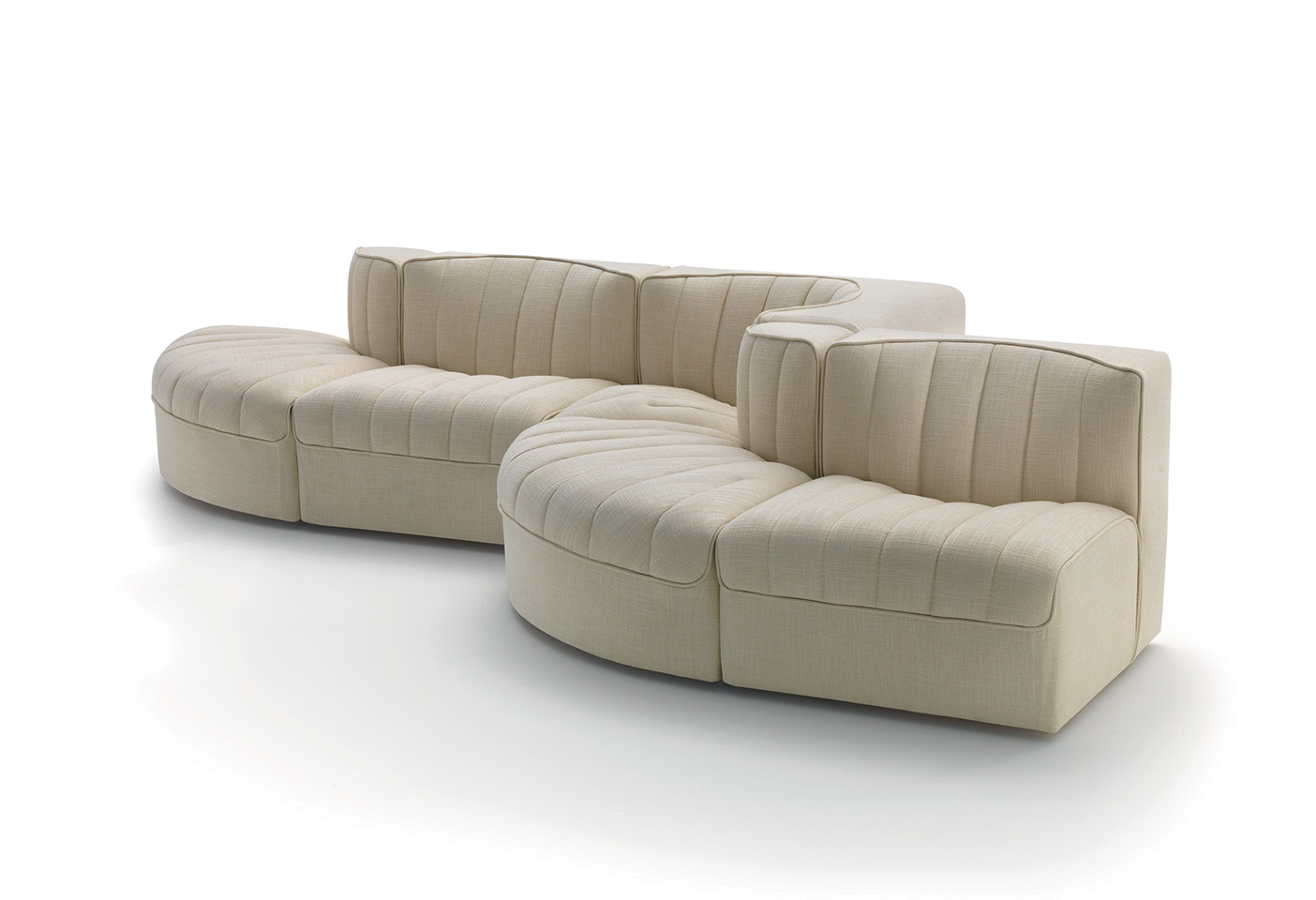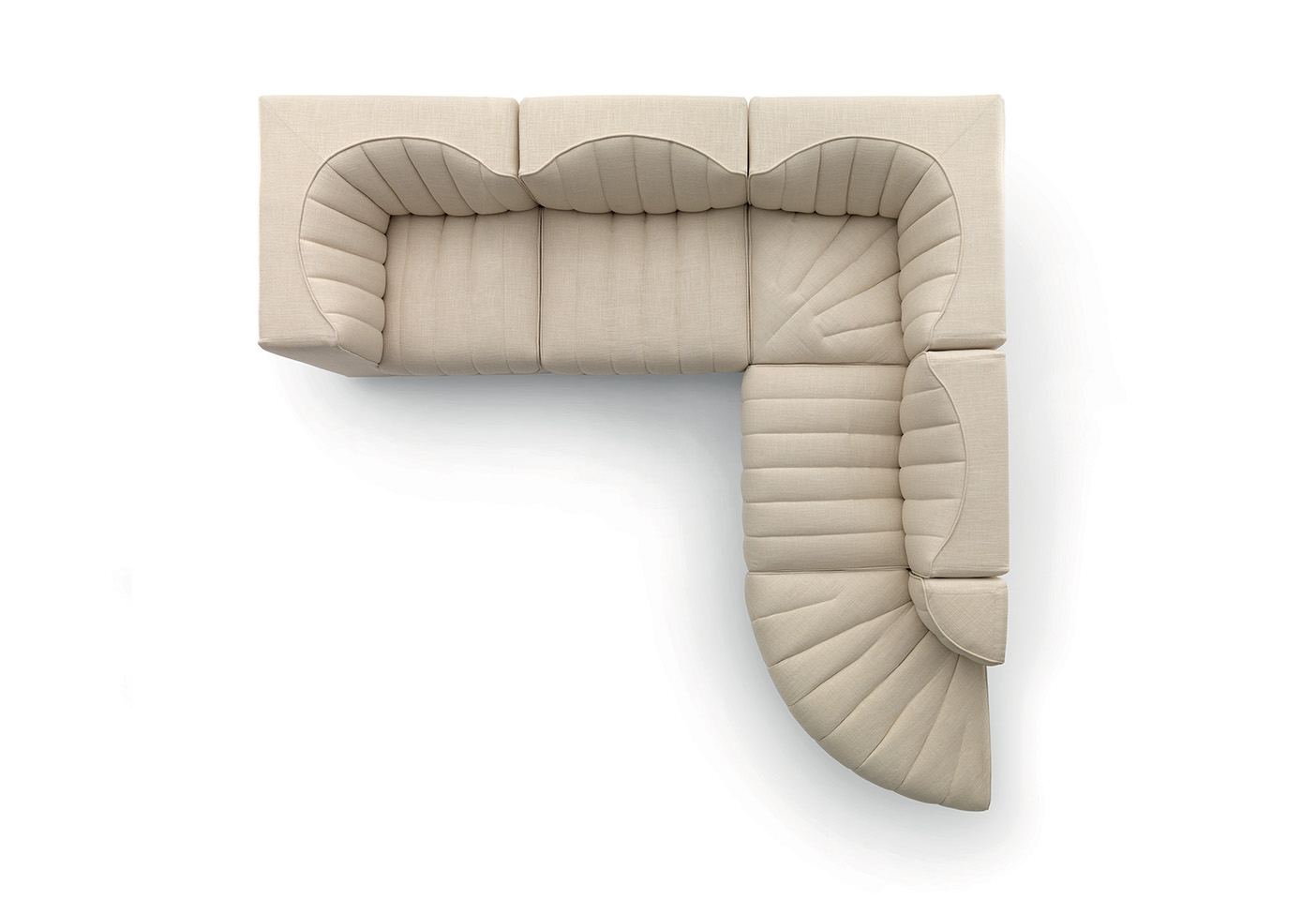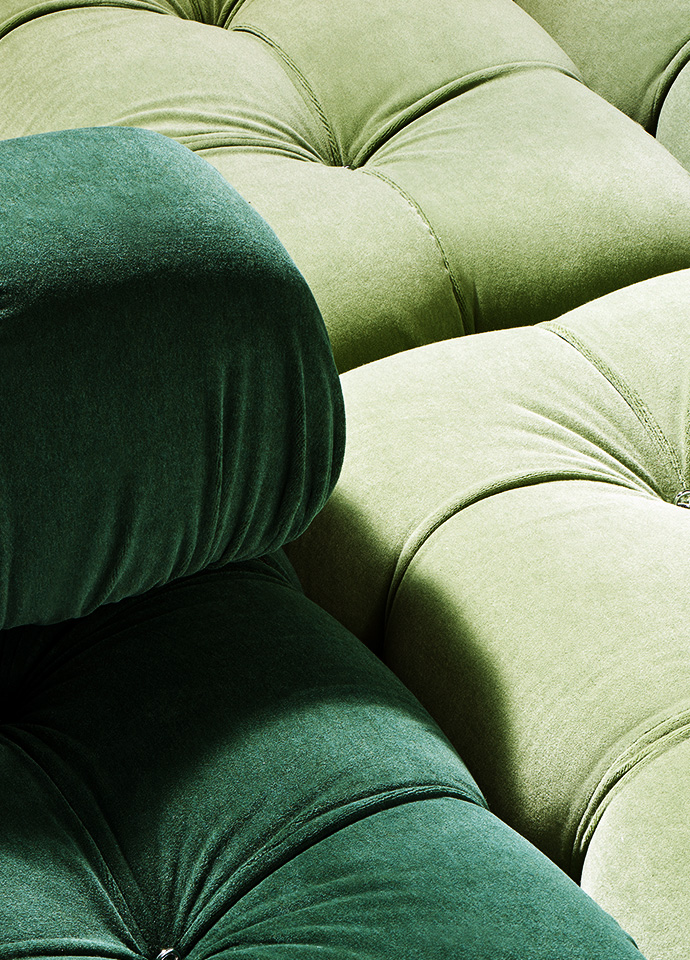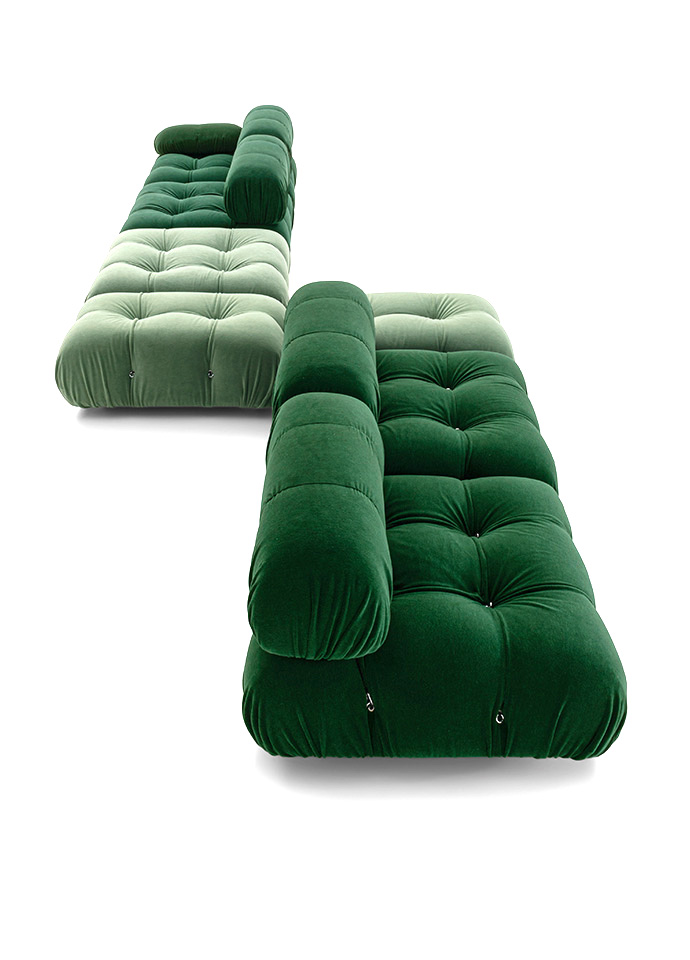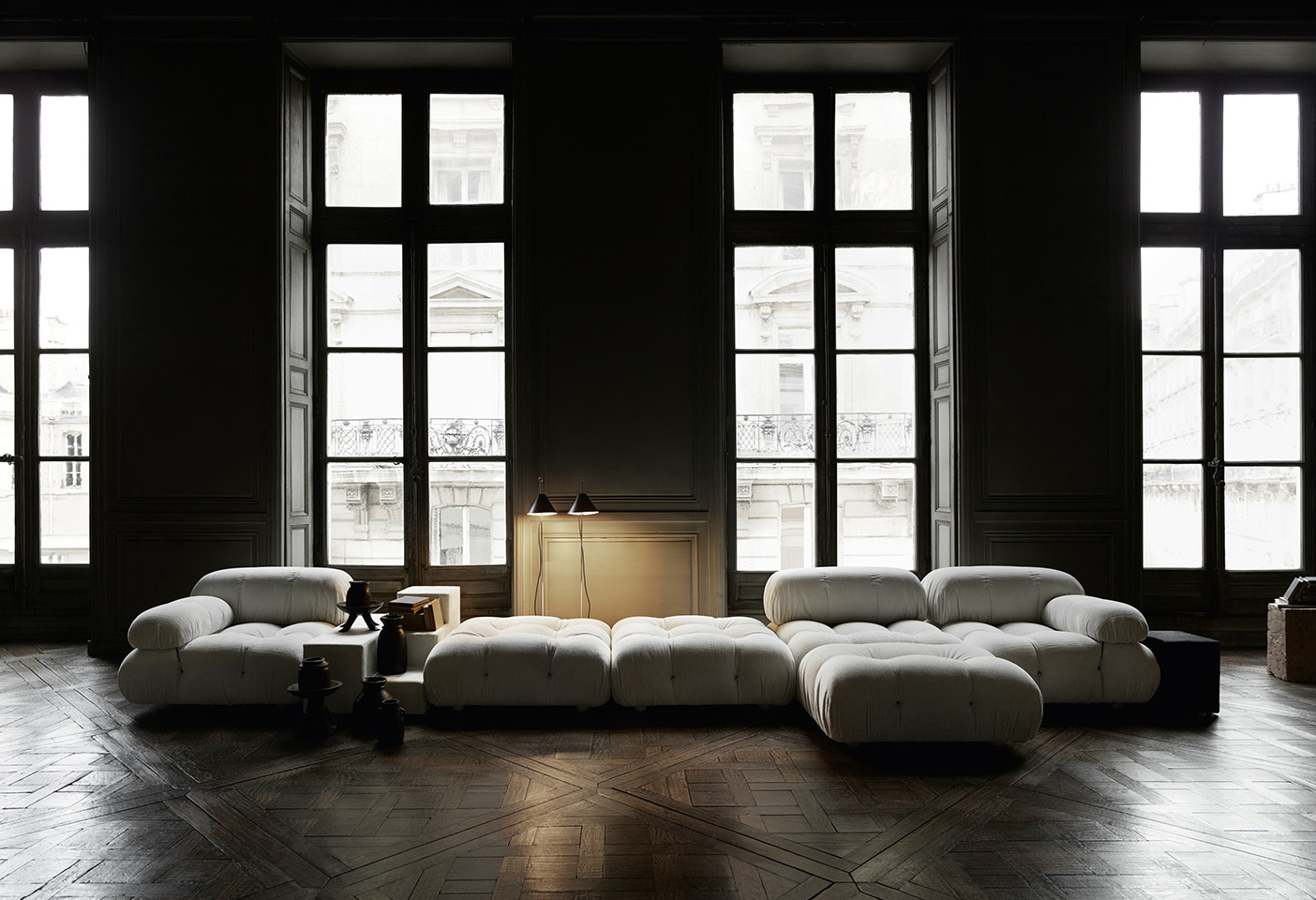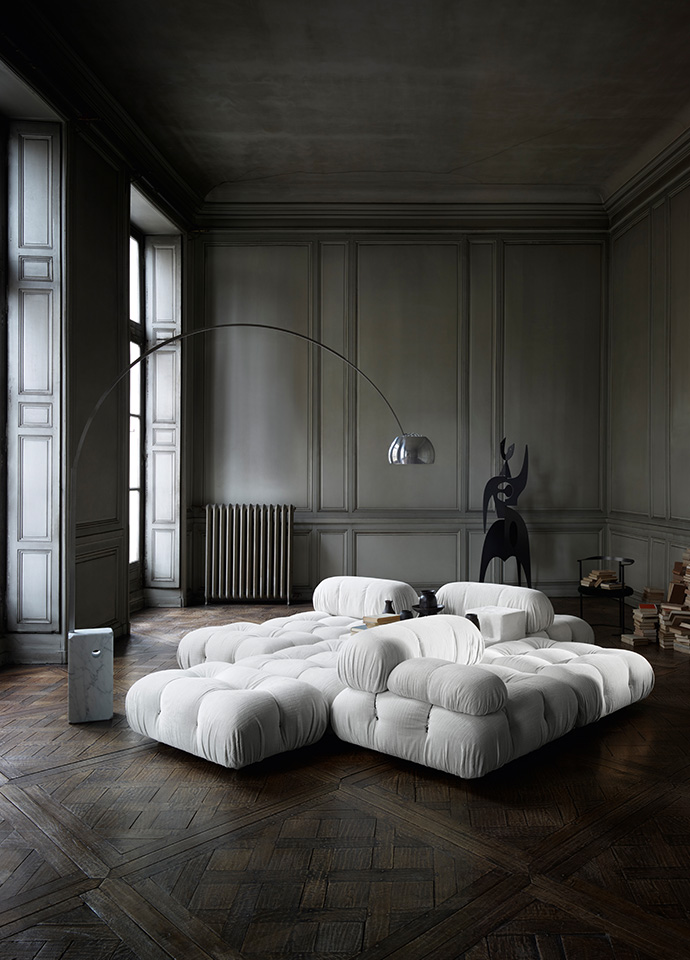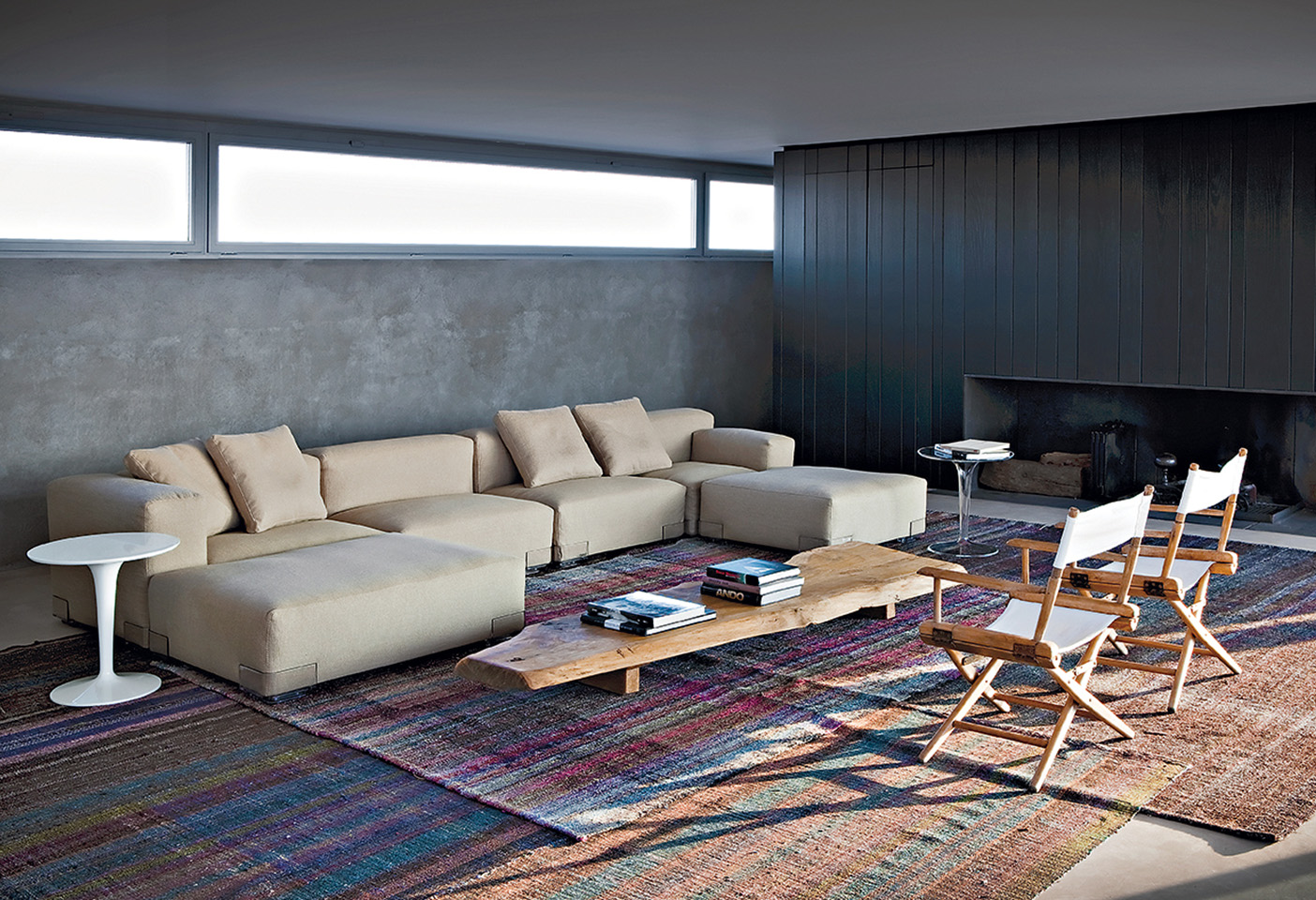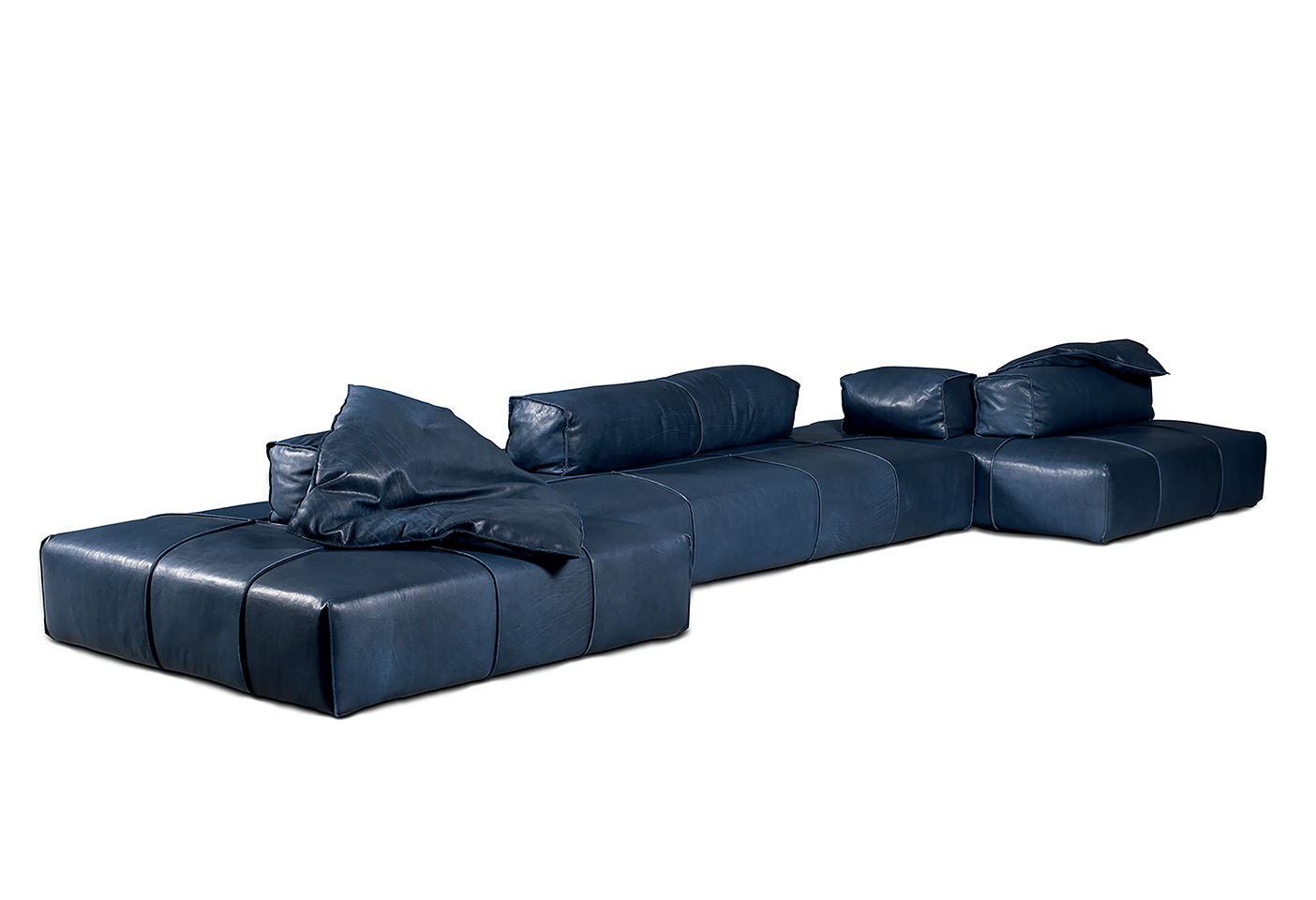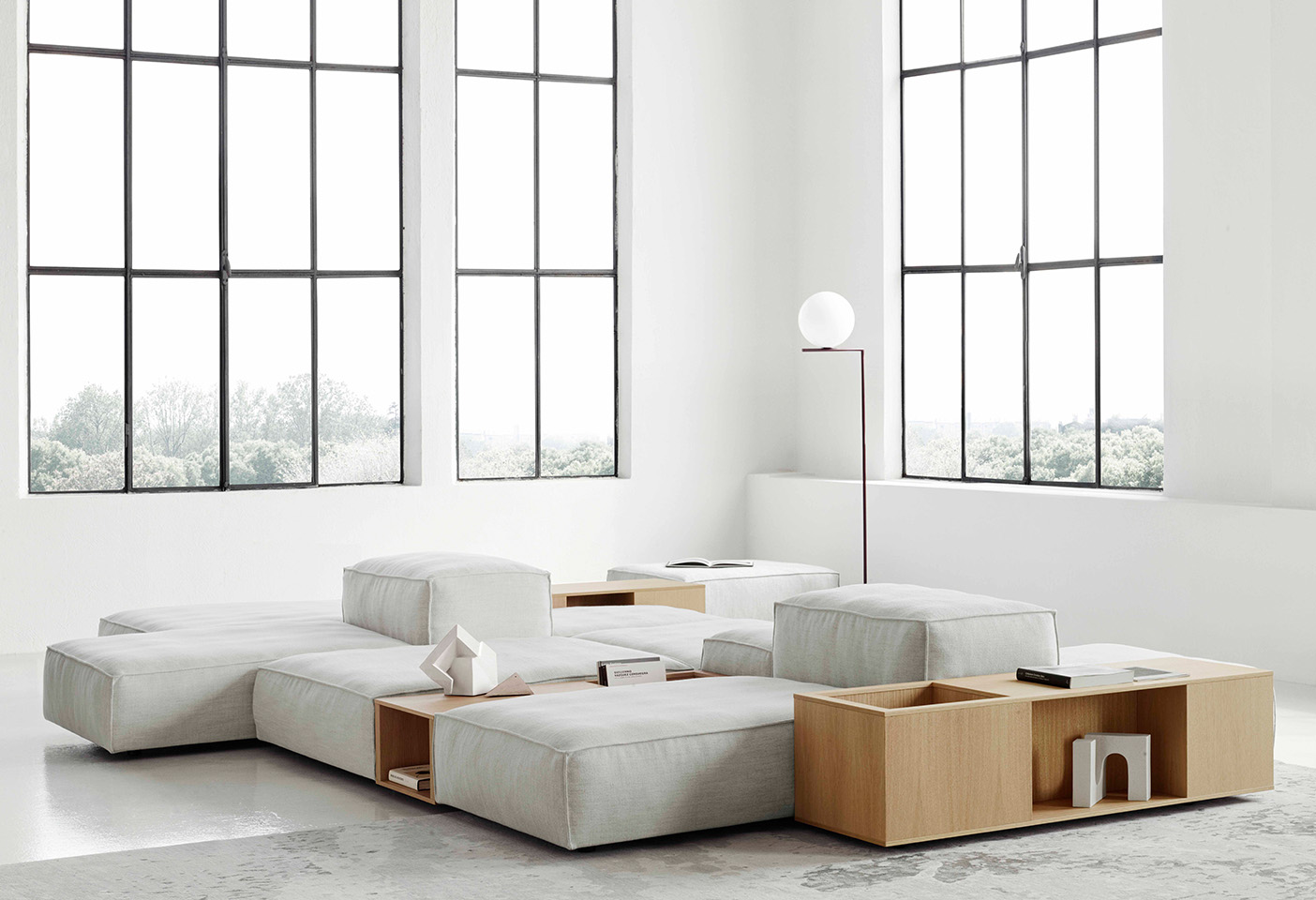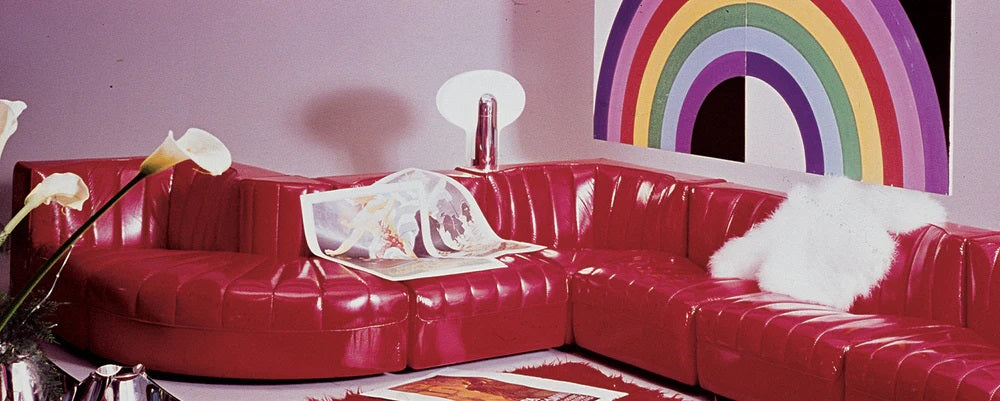
It was 1972 when the Museum of Modern Art in New York opened the ambitious exhibition, ‘Italy: The New Domestic Landscape,’ headlined by designers including Ettorre Sottsass, Cini Boeri, Gaetano Pesce and Tito Agnoli. The landmark show was radical in both concept and ambition and it pinpointed design’s changing landscape as designers responded to new social dynamics and took a blowtorch to convention. At the centre of it all was the Italian design industry and the development of the new modular sofa system that 50 years later continues to shape how we connect.
The lead up to ‘Italy: The New Domestic Landscape' saw the worldwide housing shortage of the 1960s. It was a time when the home became the hotbed for avant-garde experimentation as designers explored a smaller, more informal way of living and transformed traditional ideas of privacy and space into the realm of the open plan. Suddenly furniture became a ‘system’ that found its expression in modularity and multifunctional environments inspired by science fiction and the compactness of space travel.
The sofa was now an integral part of interior architecture and would go on to transform how we relaxed and socialised at home. The armchair was no longer the centre of the living room, families and friends were gathering in conversation pits and on highly flexible modular sofa systems that created the first lounge ‘landscapes.’ Their design grounded the architectural fluidity of the open interior and could be arranged, and then rearranged, to suit a myriad of social configurations. Furniture was expressing the mid-century’s huge social and cultural shift in real time.

The 9000 sofa system designed by Tito Agnoli for Arflex in 1970, and above in fire engine red. Photos c/o Arflex.
For Italian brands B&B Italia and Arflex, that expression was taking shape with influential designers Mario Bellini, Mario Marenco and Tito Agnoli. Their designs for the Camaleonda, the Marenco and the 9000 respectively, defined the mood of the 70s with flexible designs that turned the living space into a hub for creativity. Each sofa and its range of modular sections could be personalised to suit a particular space, and further defined by a huge range of fabrics that were bright and playful with high gloss finishes and chunky weaves that expressed the era’s huge leaps in material innovation.
‘Certain products are born in the future,’ remarked Mario Bellini at the re-launch of his Camaleonda at the Milan Furniture Fair in 2020. ‘It is so innovative, more contemporary today than it was when designed. It is related to a way of shaping one’s own home environment… Camaleonda was a new possibility. It has these 90 by 90 modules, each one divided into nine extra large capitonné squares, and hooks that let you put together the seats, the backrests, the armrests, to quickly design any shape and shake up a space without buying a new sofa.’

The endless configurations of the Camaleonda designed by Mario Bellini in 1970. Sketch and image following c/o B&B Italia.
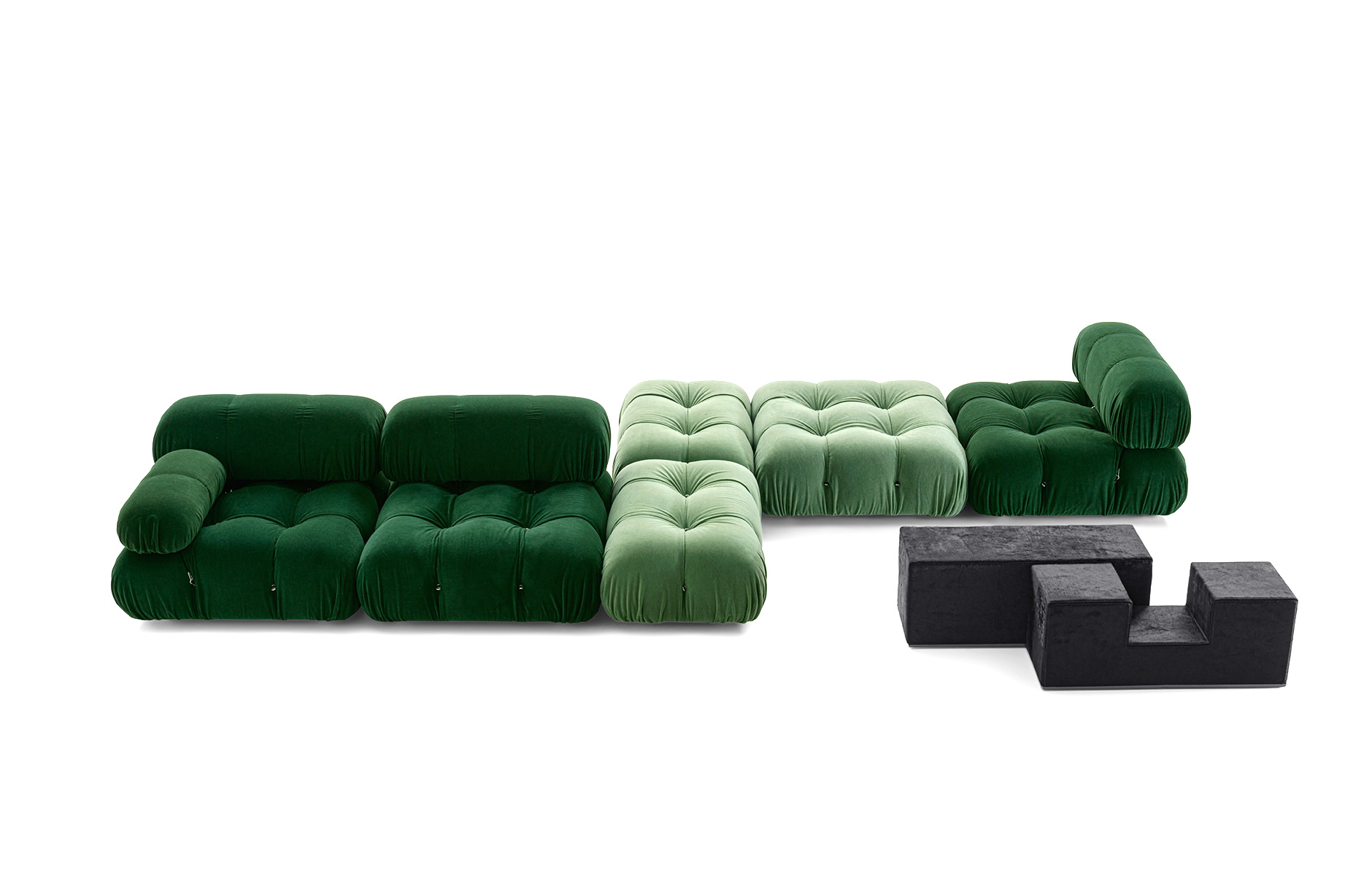
First designed in 1970, the Camaleonda was relaunched by B&B Italia in 2020 newly finessed with circular materials by Mario Bellini. Photo c/o B&B Italia.
"Certain products are born in the future... It is so innovative, more contemporary today than it was when designed."
Mario Bellini, on the Camaleonda
Fast forward half a century and those key design pieces that shook up interiors and waved in a more relaxed approach to living are finding a voice and influencing the next generation of furniture. Here we take a look at the trailblazing pieces from the 1970s by Mario Bellini, Mario Marenco and Tito Agnoli that are as contemporary today as they were when first launched, and explore more recent designs by Piero Lissoni, Francesco Binfaré, Paola Navone and Carlo Colombo that are continuing that freedom and expression.
The 9000 sofa designed by Tito Agnoli in 1970 for Arflex
Described by Italian group Arflex as ‘a series of compact and variously articulated seats’, the 9000 sofa by Tito Agnoli responded to a new approach to smaller, more versatile furniture that was compact, could grow as the need arose and allowed for 'multitasking in the home'. A group founded by Pirelli engineers, Arflex's approach was grounded in research from the start and the company built a reputation for important collaborations with architects and designers that began with Marco Zanuso and would include Mario Marenco and Tito Agnoli. The design for the 9000 with its small dimensions and easy modularity represented the perfect solution for different interior scenarios. Its system of furniture modules, composed of an armchair, a seat with one armrest, or without, and corner, curved and pouf elements, created the freedom for endless configurations and a seating landscape and design following that has elevated the sofa to iconic status.
The Marenco sofa designed in 1970 by Mario Marenco for Arflex, and re-launched with the addition of an outdoor collection and an edition without arms
Mario Marenco was a man of multiple talents. Studying architecture in Italy followed by fellowship research in Sweden and the US, in 1982 he opened studios in Milan and London. Maybe it was his friendship with Gio Ponti that led him to the other side of the world to teach at the University of Sydney, but it was his open approach to design that led to showroom projects for Fiat, Lancia and Alfa Romeo, hotels in Saudi Arabia and housing in Brazil, writing for the architecture powerhouse Rizzoli, furniture for B&B Italia and Arflex, and even acting stints on stage and television. A real renaissance man whose life experience fully informed his inventive approach to design, Marenco's most recognisable furniture piece is his self-titled Marenco sofa that perfectly sums up Arflex's ambition to modernise production and design itself. The characteristic sillouette of Marenco's sculptural cushions is only one side of the sofa's innovative design. Its concealed metal frame in Fiat red cleverly supports the seat and armrest that are designed to slip on and off with ease, providing the collection both comfort and practicality.
The Camaleonda sofa designed in 1970 by Mario Bellini for B&B Italia, and re-launched in circular materials in 2020
First designed in 1970 by Mario Bellini and selected for the 1972 exhibition ‘Italy: The New Domestic Landscape,’ Camaleonda was relaunched by B&B Italia and Mario Bellini in 2020 with an eye on refinement and sustainability. Faithful to the original project are the sofa’s 900 by 900 mm modules, its backrest and armrest and the characteristic capitonné design, still manufactured with the innovative system of cables, hooks and rings first created by Bellini in 1970. It’s on the inside where the new work has centred. Here, the aim was to make the Camaleonda more comfortable than the original and sustainable through its materials and production methodology. Describing the new internal structure as ‘built like a sandwich,’ each layer is made of recycled or recyclable materials and designed to be easily disassembled. The brilliance of the design lies in the sofa's tie-rods and rings. Modules that can be unhooked and recombined in response to the dynamic needs of the user while similtaneously maintaining the sofa's unique identity.
"A real renaissance man whose life experience fully informed his inventive approach to design, Marenco's most recognisable furniture piece is his self-titled Marenco sofa that perfectly sums up Arflex's ambition for manufacturing that modernised both production and design itself."
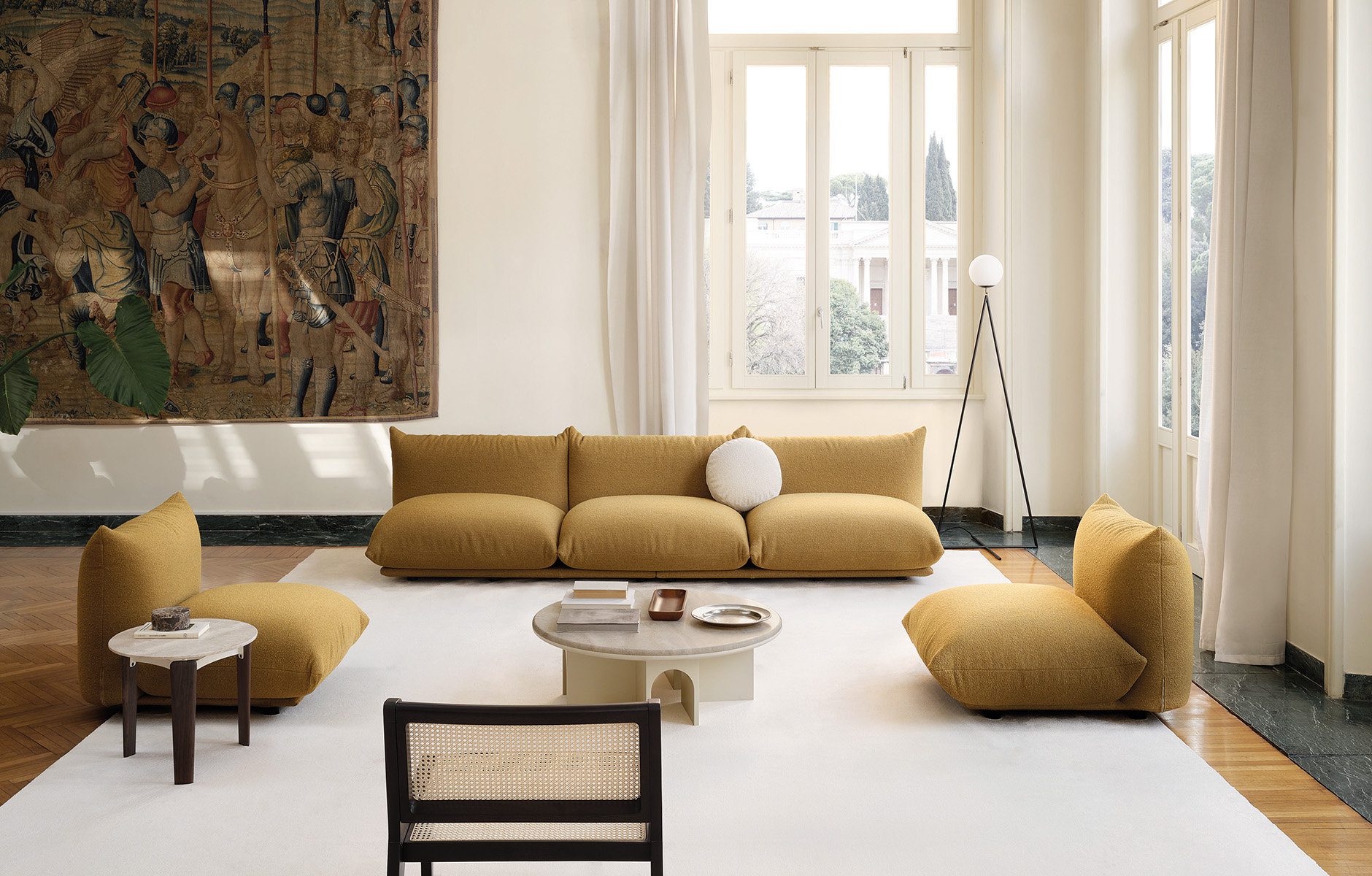
The Marenco sofa designed by Mario Marenco in 1970 released in an edition without arms in 2022. The collection joins the Marenco outdoor collection. Photo c/o Arflex.
Extrasoft by Piero Lissoni for Living Divani
Designed in 2008, the Extrasoft modular sofa by Piero Lissoni is casual, cosy and restful, framed within a soft upholstered geometry that is quintessentially Lissoni. With seats designed to be moved around, their various dimensions create configurations as vast as the imagination. The highly functional sofa has been designed in two models, one for the inside and one for the outdoors. Indoors, the Extrasoft is framed with double panelled poplar and pine, has cushions and padding covered with a quilted mat in goose down and stitched into separate compartments, and cleverly concealed velcro fastenings that hold the removable upholstery in place.
On the Rocks designed by Francesco Binfaré for Edra
Like a soft sculpture that can be mixed and matched, On the Rocks by Francesco Binfaré is both flexible and incredibly comfortable and has no visible frame. A design that includes four seating elements in different shapes and two backrests, the elements are separated from the base to allow freedom with arrangement and personal expression. Pieces can be arranged in various configurations: either combined in one composition or free standing to shift the interior perspective: its holistic ‘domestic landscape’ encouraging true engagement within a space. A highlight of the collection is embedded in the innovatively soft form that supports unbelievable relaxation.
Skyline designed by Carlo Colombo for Giorgetti
Designed by the architect Carlo Colombo, the Skyline series of modular sofas includes a chaise longue, back-to-back unit seat and stool. Like all of Colombo’s work, it’s a refined piece that draws on the classics and embraces Giorgetti’s approach to beauty, comfort and durability. The structure is made from multi-layers of solid wood, padded with layers of memory foam and goose down and upholstered in fabric and leather. It’s a design that can be expanded with a chaise, a stool or the addition of a casual table that all form part of the Skyline collection.
Plastics Duo by Piero Lissoni for Kartell
‘Kartell is like a beautiful woman who keeps reinventing herself,’ remarked Piero Lissoni. ‘Keeping a constant eye on the future, while, at the same time, never forgetting the past is an extraordinary thing.’ The sentiment explains the Plastics Duo collection that was one of Kartell's first upholstered pieces. Designed to move from inside to out the sofa is simple and buildable, with flexible seating elements that feature the collection's characteristic transparent 'foot' that offers a contemporary nod to tradition.
Panama Bold by Paola Navone for Baxter
Designed in 2015 by Milan-based architect and designer Paola Navone, the Panama evokes her early career working alongside Alessandro Mendini, Ettore Sottsass and Andrea Branzi (and Memphis Design), and the irreverent and bold approach to form that was creatively honed by colour and texture. It’s a deceptively simple design that responds to open spaces and consists of a soft and comfortable modular ottoman with pillows that counterweight and balance the collection. Here, a relaxed aesthetic is backed up by real comfort and finessed details, with down padding and finely edge-stitched upholstery that take shape in a myriad of colourful leathers.
B&B Italia, Arflex, Living Divani, Edra, Baxter, Kartell and Giorgetti are available exclusively in South East Asia from Space – Australia, and Space – Singapore and Kuala Lumpur.

